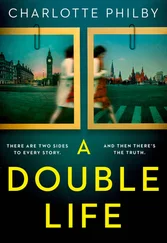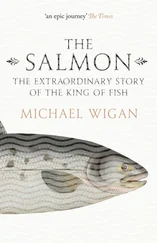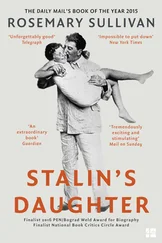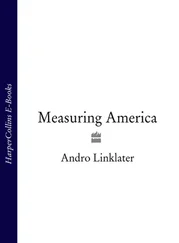In October 1781, Reed repaid a favor by appointing Wilkinson a general in the Pennsylvania militia and helping him win election to the Pennsylvania assembly representing Bucks County. Such influential positions should have been profitable, but in the wake of Cornwallis’s surrender on October 19, 1781, the wartime economy began winding down, and Wilkinson’s lack of “mercantile knowledge” was a handicap in making money in a falling market.
Through the remaining months of the war, he cobbled together earnings from Trevose with what he made from Maryland’s tobacco deals and uniforms, but the income was not enough to meet his needs. Shortly before Yorktown, his natural optimism abruptly gave way to deep gloom that expressed itself in forebodings about the war. Since General Nathanael Greene had won a series of victories in the early part of 1781, helping to drive Cornwallis back to the coast, there was little justification for his dark mood. “I think General Wilkinson too desponding,” Reed protested with a hint of exasperation. Yet, the very success of his old patron may have contributed to Wilkinson’s despondency.
By chance he had visited Greene in June 1780 at his then headquarters in Springfield, New Jersey, arriving as a British and Hessian column from Staten Island was advancing into the New Jersey hills to threaten the American position. Wilkinson at once led out a vigorous reconnaissance patrol that provided Greene with intelligence about enemy movements, and in the aftermath of the victorious skirmish that turned back the British force, the general wrote appreciatively to Clement Biddle, “General Wilkinson was with me the other day in the action of Springfield; and was very active in discovering the enemy’s motions. It is a pity so good an officer is lost to the service.” Whatever Wilkinson’s other shortcomings, none of his generals doubted his tactical sense and energy. At least part of the twenty- four-year-old’s dark mood must have sprung from the realization that he had thrown away a career for which he possessed a natural talent.
In the months following Yorktown, it became clear that the conflict was effectively over, and diplomatic contacts began to move toward peace negotiations. By the end of 1782, Wilkinson was by his own account without “cash or credit,” and, with the birth of his first child, John, faced the added expense of fatherhood. Ownership of Trevose had become a burden, but it created an ambition that never left him of making a fortune from land speculation. As he aged, his hunger for it grew larger until he dreamed of possessing an empire comprising much of Texas. The ambition gave shape to the rest of his career and to his treachery. And before the war was over, he took the first step to achieving it.
In the spring of 1783, he sold Trevose, and Nancy moved with one-year- old John, and his newborn brother, James, into her father’s house. By September 3, 1783, when the Treaty of Paris was signed, James Wilkinson had crossed the Appalachians to join the flood of Americans hoping to buy cheap land on the western frontier.
7
THE KENTUCKY PIONEER
KENTUCKY WAS DESTINED to be bought. So thought the first Euro pe ans who found a way through the mountains and were stunned by the natural wonderland on the other side. “The vallies are of the richest soil, equal to manure itself, impossible in appearance ever to wear out,” the Dutch-born, South Carolina–based explorer John William de Brahm reported in 1756. “This country seems longing for the hands of industry to receive its hidden treasures, which nature has been collecting and toiling since the beginning ready to deliver them up.” Watered by innumerable clear streams, forested with gigantic trees that three men with outstretched arms could not circle, its woodland provided a haven to “innumerable deer,” elk, and beaver, and the grasslands fed buffalo that arrived at salt licks in their thousands and stood belly deep in the blue grass “more frequent than I have seen cattle in the settlements,” according to Daniel Boone, “browzing on the leaves of the cane, cropping the herbage on those extensive plains.”
In 1775 Judge Richard Henderson of North Carolina gave voice to the inner dream that Kentucky inspired. “The country might invite a prince from his palace merely for the pleasure of contemplating its beauty and excellence,” he declared, “but only add the rapturous idea of property and what allurements can the world offer for the loss of so glorious a prospect?” Most of the land was owned and occupied by the Cherokees, but Henderson’s Transylvania Land Company had purchased twenty million acres— reduced to two hundred thousand acres by the Virginia assembly, which reserved to itself the right to buy land from Native Americans—and he was ready to offer the rapture of property to anyone determined enough to take a train of horses through the Cumberland Gap or ride a flatboat down the Ohio River. During the next eight years, while the war of independence was being fought, thirty thousand settlers heeded his advice and crossed the mountains to buy land in the west.
Among this first wave of pioneers, James Wilkinson stood out. His exceptional war record, his political contacts in Philadelphia, his medical knowledge, and his outgoing personality, all counted in the turbulent, egalitarian society of Kentucky’s frontier. In staccato style, a fellow settler, Humphrey Marshall, noted the impact of Wilkinson’s physical presence, energy, and wit: “A person not quite tall enough to be perfectly elegant, compensated by symmetry and appearance of health and strength; a countenance open, mild, capacious, and beaming with intelligence; a gait firm, manly, and facile; manners bland, accommodating and popular; and address easy, polite and gracious, invited approach, gave access, assured attention, cordiality and ease. By these fair terms, he conciliated; by these he captivated.”
This pleasing impression was reinforced by the evidence of his wealth, or at least of wealthy backers. Despite having limited funds at his disposal, within three months Wilkinson had bought 12,550 acres on the Kentucky River and filed claims for another 18,000 acres at the Falls of the Ohio, the future Louisville, and farther east on the Licking River where the land was cheaper. Following old frontier advice that “the best method of getting first- rate lands . . . is by way of goods,” he set up a store in Lexington, a strategic point at the end of a good trail from Virginia. The settlement amounted to no more than thirty log cabins and a stockade on either side of a dusty track, but from here new arrivals might move northwest to the Ohio or southwest into the grassy “wilderness.”
The money for buying land came from wealthy friends in Philadelphia, such as Dr. Hugh Shiell, a Scots land speculator, and his brothers- in-law, James Hutchinson and Clement Biddle, while the Lexington store was set up with two partners he had known from his days on Horatio Gates’s staff, Isaac Dunn and James Armstrong. Even the goods it sold, lengths of calico, corduroy, chintz, and Marseilles lace suitable for petticoats, as well as shoes, beads, “trinkets and gewgaws,” were supplied on easy terms courtesy of another friend, John Moylan, whose business, Moylan, Barclay & Company, was one of the largest in Philadelphia.
Within Kentucky itself, the warmth of Wilkinson’s personality quickly enabled him to build up a network of useful friends. At its heart was his lawyer, Harry Innes, the newly appointed attorney general for Kentucky district, who handled all Wilkinson’s land deals and increasingly complex financial arrangements. Another was Humphrey Marshall, who, seduced by the newcomer’s winning personality, promised to join forces with Wilkinson in the search for suitable land, a pledge that in time developed into lawsuits and a rancorous hatred.
Читать дальше












